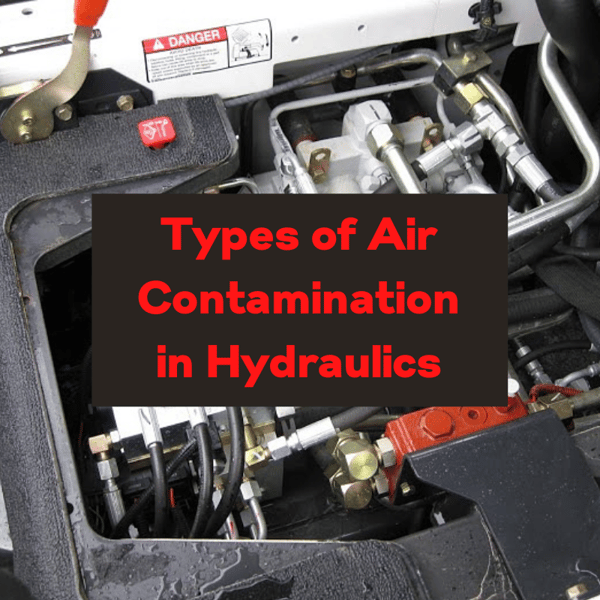You know that the presence of metal particles or dirt in your hydraulic fluid points to some issues, but there is another form of contamination that you usually can’t see: air. And when your hydraulic system has air contamination, it can lead to some serious problems for your compact equipment (including your final drive motors).

This is the first of a multi-part series about air contamination of hydraulic fluid
Here's Part 2: Foaming Hydraulic Fluid: What You Need to Know
Here are a few other Shop Talk Blog posts you might find interesting:
- Results of Hydraulic Contamination
- Hydraulic Fluid Injection
- Lubricants: An Investment in Your Equipment
Why Air Contamination Can Be a Problem
You depend on hydraulic fluid to remain stiff enough under pressure to transmit force, power, and motion. Air, however, has much more give to it when compared to hydraulic fluid. It makes sense, then, that when your hydraulic fluid is contaminated by air, it’s invariably going to lose some of its stiffness. This means it won’t be as efficient at transmitting power, but there can be other problems and depending on the form of air contamination present.
Four Forms of Air Contamination
There are four different ways air can be contaminating your hydraulic fluid:
- Foam: clusters of air bubbles with a diameter greater than 1 mm in diameter (about the thickness of a credit card or ID card) on the surface of your hydraulic fluid
- Entrained air: bubbles that are typically less than 1 mm in diameter and dispersed in the fluid; unlike foam, entrained air doesn’t just cluster on the surface of hydraulic fluid
- Free air: pockets of air that are trapped within the hydraulic system
- Dissolved air: this occurs when you have 6% to 12% (by volume) of dissolved air in your hydraulic fluid
Foam Contamination
You open up your hydraulic system and notice foam bubbles on the surface of the hydraulic oil … what does that mean? The presence of foam in the hydraulic is usually not a serious problem unless there is enough foam to cause the reservoir to overflow. If that does happen, it can be a sign of something more serious.
Entrained Air Contamination
If the clusters of air bubbles aren’t just on the surface of the hydraulic fluid but are actually dispersed throughout, it is referred to as entrained air and can cause some serious issues for your hydraulic system in general and your final drives in particular. One of the most notorious sources for entrained air is pump inlets, but it can also enter the system through low reservoir fluid levels and leaks in suction lines.
Free Air Contamination
Free air is basically pockets of air that have become trapped in hydraulic components such as cylinders, pumps, or final drives. Of all the forms that air contamination can take, free air is the easiest to prevent. Just remember to pre-fill any components you install and bleed the hydraulic system, it shouldn’t pose a problem.
Dissolved Air
Hydraulic fluid is engineered to handle the presence of up to 12% dissolved air, which usually doesn’t pose much of a problem. In fact, all hydraulic fluid will have some level of dissolved air present. However, under certain conditions, dissolved air can become entrained air.
Conclusion
You know to keep your hydraulic system clean and avoid contaminations such as dirt, dust, water, and grease out of your system. However, air can be more of a problem. You can’t depend on a hydraulic filter to keep out air, and you may not even know you have a problem until you start noticing the symptoms. However, a good starting point is to pre-fill any components you install and bleed the hydraulic system.
And don't forget about Part 2: Foaming Hydraulic Fluid: What You Need to Know


